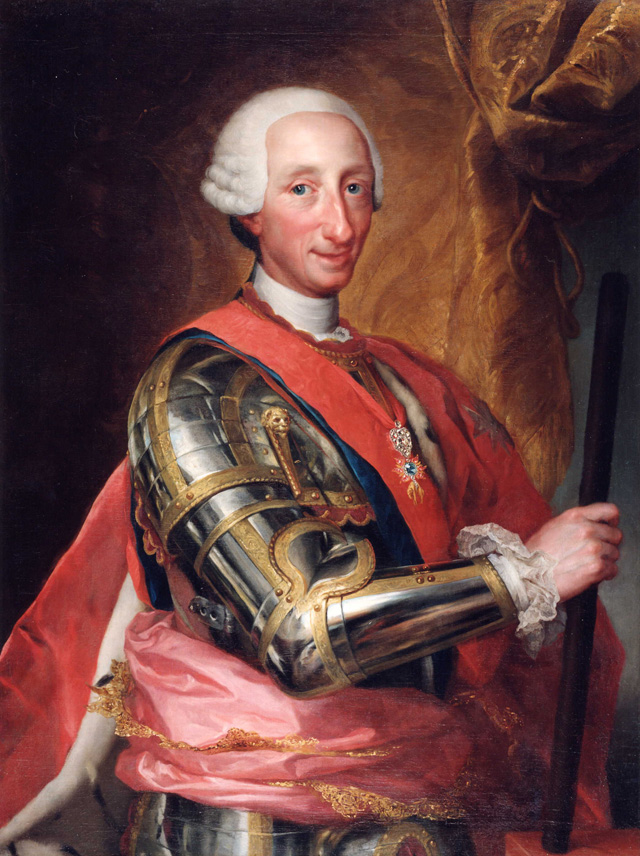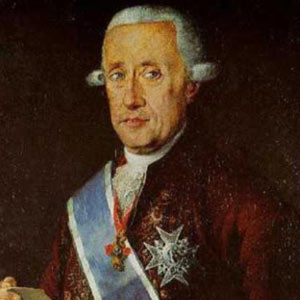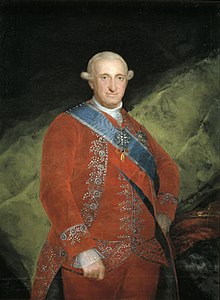Hello classmates!
Today in Social Sciences we have done several things. First Paqui has said that the last day we have seen "The War of Spanish Succession" (1700-1713). This war is about: When Charles II died without direct successors, he left his kingdoms to Philip of Anjou, Louis XVI's grandson. Different european powers disagreed with his testament.
Austria, the Low Countries, Portugal and Great Britain were against the french influence over the Hispanic Monarchy and supported Archduke Charles of Austria.
In the Iberian Peninsula:
-The British invaded Gibraltar and Minorca.
-"Quan el mal ve d'Almansa a tot el món alcança" was refered to the Battle of Almansa this war and the Aragonese and Valencian troops were defeated in Almansa 1707.
BATTLE OF ALMANSA
And Paqui has asked a question that is: What happened in 1713?
And in this moment Cristina Blanco has come to remember the people that go to London that this Thursday they have to go with Cristina to pay a part of the money of the trip.
Later we have continued with the question of Paqui and them Paqui has explained that: In 1713 the Archduke Charles inherited the heir of the Emperor of Austrian Empire when the Emperor died.
Paqui has explained that when the Treaty were signed in Europe,
the war continued in Catalonia for one year more and the Catalans were defeatedonthe 11th of September 1714.
SEPTEMBER 11th 1714 in CATALONIA
Source:
http://www.helpcatalonia.cat/p/special-edition-september-11th-national.html
After this we have started the Treaty of Utrecht:
-Philip V was accepted as King of Spain (1st King of the Bourbon Dynasty). He had to renounce to his rights to the Crown of France.
-All the European Posessions of the Hispanic Monarchy were for Austria and Savoy.
-Great Britain kept Minorca and Gibraltar and they got two rights in the Indies, which broke the Spanish Monopoly in their colonies: the assiento and the Ship of Permission.
TREATY OF UTRECHT
Source:
http://es.wikipedia.org/wiki/Tratado_de_Utrecht
The territories that Spanish Monarchy lost were Milan, Naples, Sardinia, Flanders. The territory added to Savoy was Silicy, and the territories awared to House of Bourbon kept were Spain and its colonies in America, Asia and Africa.
EUROPE AFTER THE TREATY OF UTRECHT
When we have finished the War of Spanish succession, we have started with the Bourbons in the 18th century that there were 5 monarchs of the House of Bourbons and Paqui has done this scheme:
FIRST BOURBONS
-Centralist Absolutism was represented by:
+ Philip V (1700-1746)
+Louis I (6 months 1724)
+Ferdinand VI (1746-1754)
-Enlightened Despot:
+Charles III (1759-1788)
-Crisis of the Ancien Régime:
+Charles VI (1788-1808)
Paqui has said that we can complete this scheme with the information and definitions.
PHILIP V (1700-1746): He imposed absolutism, inspired on France's political system:
-Nueva Planta Decrees: elimination of the particular laws and institutions of the Crown of Aragon.
-All the Castilian institutions were extended to all the territory:
+The Cortes of Castile became Cortes of Spain, but they were barely called.
+Corregidors in the municipalities.
+Audiencias (Court of justice)
Them Paqui has looked in wordreference the meaning of cyclothymic-> Ciclotímico
María Alcañiz has asked to Paqui that "Why the Philip V's portrait (Xátiva museum) was upside-down? Paqui has answered
Philip V's portrait is upside down not as a consequence of a revolution, but because in 1943 someone in Xàtiva decided to hung Philip V´s portrait upside down to remember the punishment the city suffered and as a revenge upon Philip V. This was because after the Battle of Almansa Philip V´s troops occupied the city of Xàtiva on the 6th July 1707 and Philip V ordered to set fire to the city. The city burned for 8 days (this is why its inhabitants are called the socarrats (burned).The name of the city was changed to Colonia Nueva de San Felipe or simply San Felipe and the city was repopulated with people loyal to Philip V. That's why someone in X'ativa, remembering the past, decided to punish the king hunging his portrait upside down, and she has explained that one week ago in Catalonia some people put the king's portrait's upside-down because
the king is Philip V's descendent and the people who demand independence for Catalonia date back to 1714 and relate the present king as representative of what Philip V did PHILIP V'S PAINTING IN XÁTIVA MUSEUM
CATALONIA'S NUEVA PLANTA DECREE
Source:
http://es.wikipedia.org/wiki/Decreto_de_Nueva_Planta_de_Catalu%C3%B1a
PHILIP V'S SUCCESSION: Philip V had frequent depresive episodes. He abdicated in favour of his son Louis in 1724. Louis I reigned only for six months because he died. Paqui has explained me that she think that was by the samllpox.
When Louis I died, Philip V was forced to return to the throne, but he left everyday rule on his secretaries until his death in 1746.
His son Ferdinand VI (Son of his 1st wife, Mary Louise Gabrielle of Savoy) became the new king.
LOUIS I
Source:
http://noblecanvas.9f.com/spain.html
Paqui has added that Philip V had two wifes and the second was very strict and Paqui think that this woman was very ambitious! Also that the Bourbons had the same problems
with imbreeding as the Austria dynasty, because they got married with people of their same family and there were always members of the royal family with mental or physical problems. Philip V and Ferdinand VI are examples of these problems
FERDINAND VI (1746-1759)
Source:
http://historiaantiqua.byethost8.com/paginas/Borbones.htm
Some competent ministers worked during his reign: the marquis of Ensenada (Cadastre:
I said that one of the punishments to the territories of the Crown of Aragón was the creation of a unique tax everybody had to pay, depending on their properties. This tax had different names in every kingdom: única contribución in Aragón, equivalente in Valencia, talla in Mallorca and cadastre in Catalonia. Ensenada wanted to extend this tax to Castille and that's why he promoted a big survey to collect data of all the kingdom. They collected a lot of information, but the privileged opposed this tax and finally it wasn't applied in Castile.) and Carvajal. They modernized the navy and tried to control trade with the Indies.
MARQUIS OF ENSENADA
Source:
http://commons.wikimedia.org/wiki/File:Marquis_de_Ensenada.jpg
In Castile the nobles didn't pay these taxes because they said that were privileged people, but in the rest of kingdoms the nobles paid taxes.
His succesor was his half brother Charles. He had been king of Naples for 20 years before arriving Spain.
He became crazy when his wife died. He didn't was buried in the Escorial because he didn't had childrens with his wife Barbara.
- Charles III had been king of Naples, where he was influenced by the ideas of Enlightenment and he wanted to modernize the kingdom, with the help of some enlightened ministers, like Floridablanca, but only in some aspects, because he was an enlightened despot.
Charles III :
He had a lot of problems, he was an unhygienic, he didn't changed his clothes.
Source:
http://en.wikipedia.org/wiki/Charles_III_of_Spain
-Representative of Enlightened Absolutism in Spain. Many of his ministers were enlightened: campomades, Olovide, the Counts of Aranda and Floridablanca.
ARANDA
FLORIDABLANCA
Source:
http://www.regmurcia.com/servlet/s.Sl?sit=c,373,m,1915&r=ReP-25170-DETALLE_REPORTAJES
-At the beginning of his reign, he had problems with the privileged: ESQUILACHE RIOTS: the privileged instigate the people's revolt using the new hygiene and public order ordinances as a pretext.
Charles III dismissed Esquilache and expelled the Jesuits (accused of having participated in the riots), but he went on with reforms.
It was similar of revolt of Comuneros and revolt of Germanías, because it was partly due to the reaction against the foreign ministers.
Some date that has been funny for the class was that the creator of Pocoyo is a descendent of Floridablanca and also the actually king is very similar to Charles IV.
CHARLES IV
This an interesting link about Philip V and Ferdinand VI's mental problems:
http://todayinsocialsciences.blogspot.com.es/2012/11/the-first-bourbons-mental-problems.html
After these Paqui has used Carlos (Esquilache) and Dani, Guille and Luis (Nobles) to explain the Esquilache Riots . The bell has rung and the class has finished for today.
Some new important words:
-Saying: dicho
-Bipolar: bipolar
-Cyclothymic: ciclotímico
-Deaf-mute: sordomudo
-Rarely: rara vez
-Intendant: intendante
-Cadastre: Catastro
-Register: registro
-Survey: encuesta
-To charge taxes: cobrar impuestos
-Esquilache Riots: Motín de esquilache
-To instigate: to provoke
-To issue: publicar
-To issue a decree: publicar un decreto
The class of today has been very complete! Bye classmates!
See you tomorrow:) kisses!








